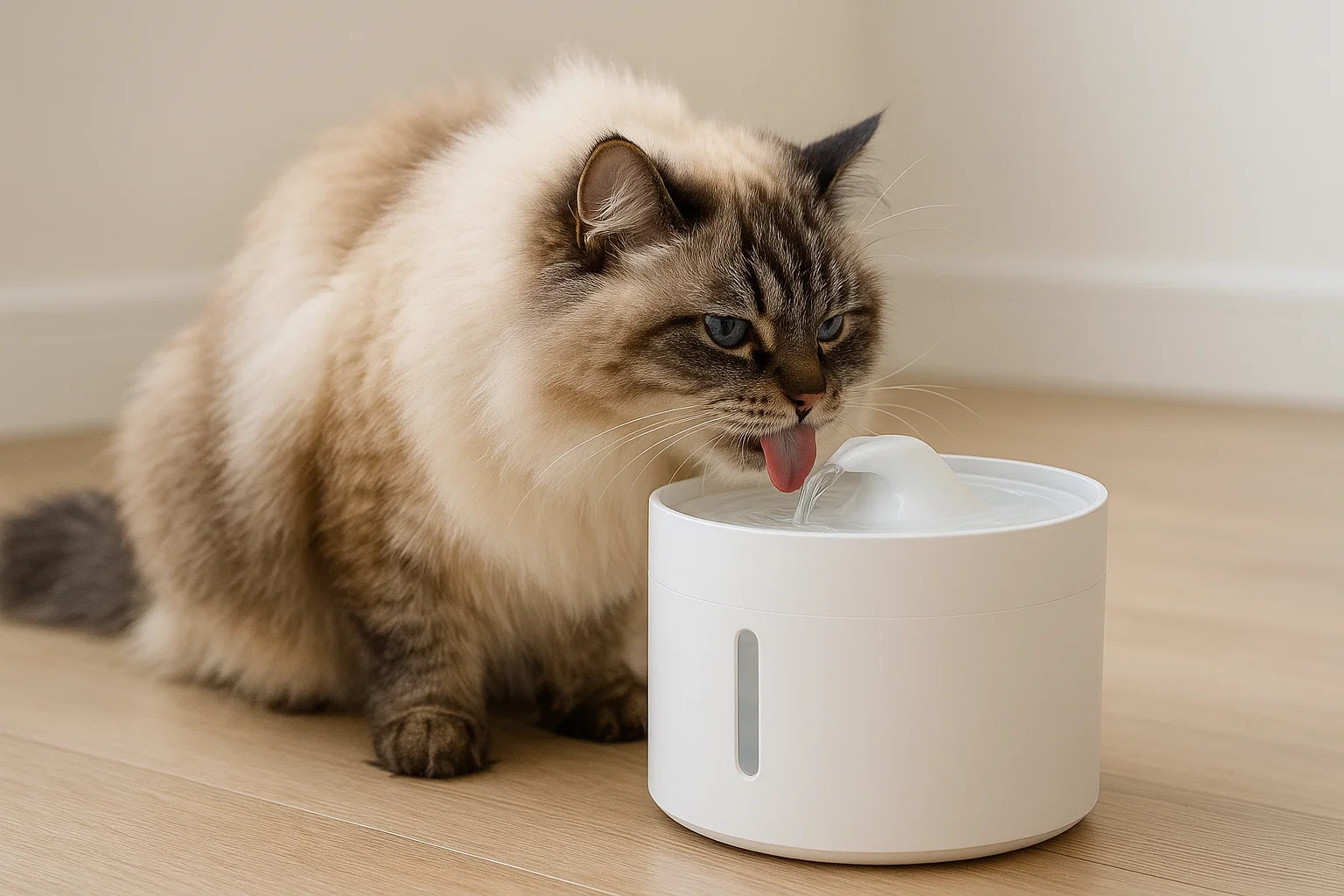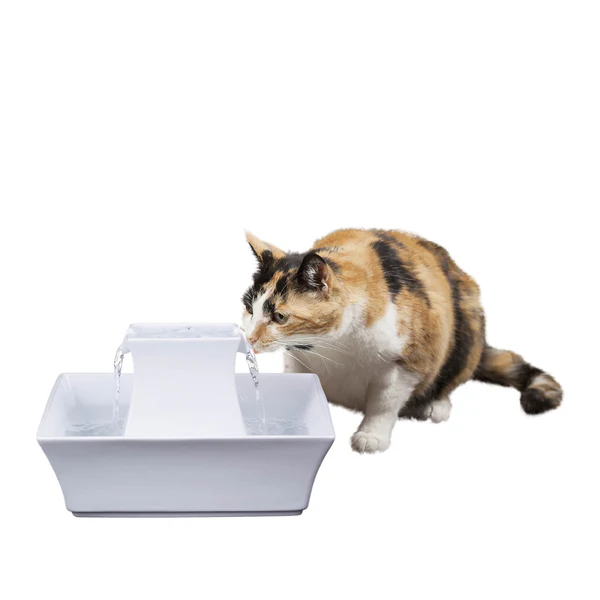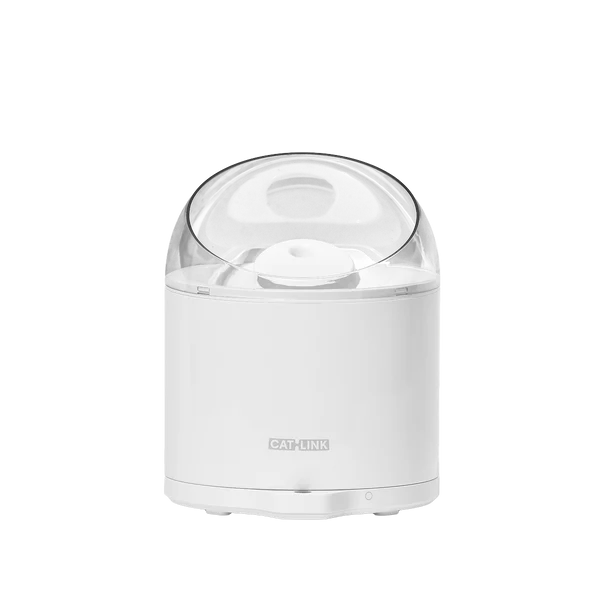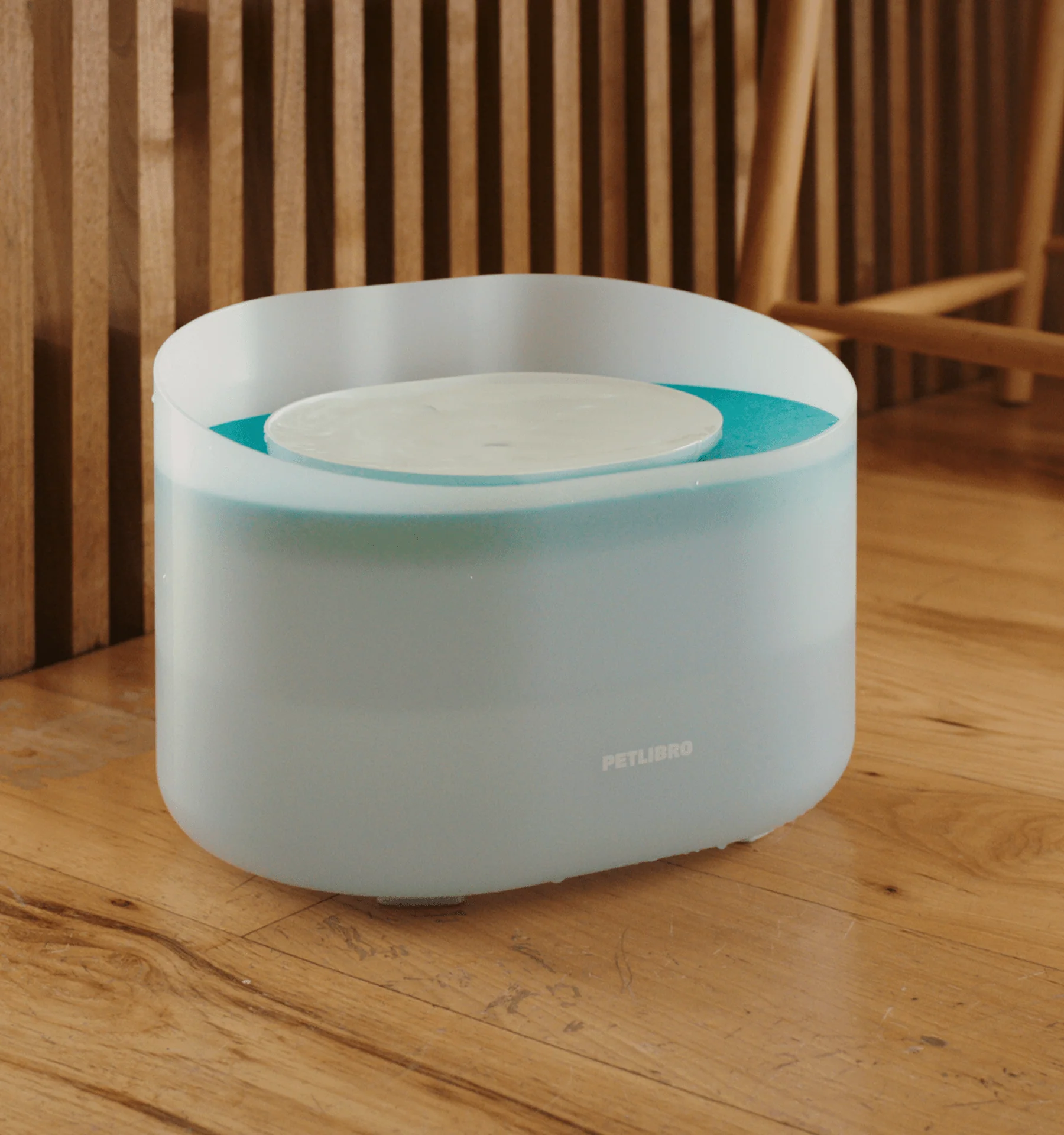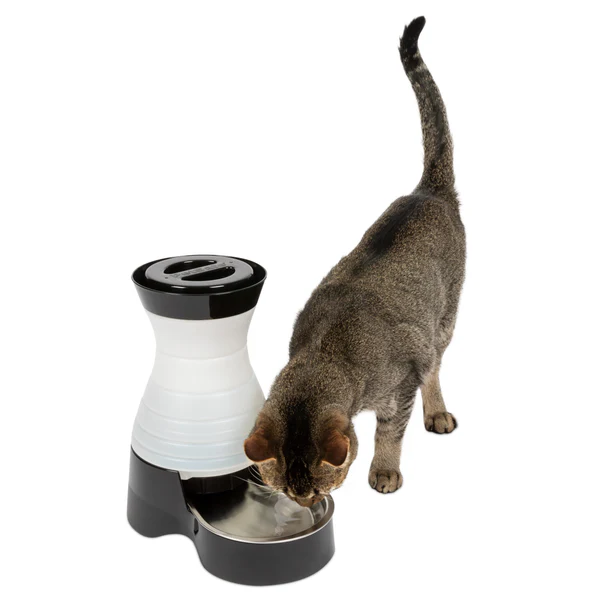Staying on top of your pet’s hydration needs is one of the simplest, yet most overlooked, ways to support their long-term health.
Whether you’re raising a curious kitten, a senior dog, or both, investing in a quality cat water fountain can make a noticeable difference in how often they drink—and how clean their water stays.
But not all fountains are created equal. This guide breaks down what to look for, what to skip, and how to choose the best fit for your home.
Quick Guide: Choosing the Right Cat Water Fountain
💧 TL;DR: Here’s What You’ll Learn
- Cats and dogs often drink more when water is moving—not still.
- Material, filtration, pump design, and noise levels make a big difference.
- Ceramic is hygienic but heavy; plastic is lightweight but may retain smells.
- Consider your pet’s preferences, sensitivity, and your routine maintenance style.
🔍 Keep reading to avoid common mistakes and find a fountain that fits your lifestyle—and your pets’ needs.
Material, filter type, noise rating, pump access
Loud motors, hard-to-clean corners, weak flow
Hydration supports kidney function and reduces UTI risk
Why Cat Water Fountains Are Worth Considering
While traditional water bowls have long been the standard, more pet care professionals are now recommending cat water fountains—and with good reason.
Flow Encourages Drinking
Running water naturally attracts cats and dogs. In the wild, still water can signal contamination, while moving water tends to be fresher and safer. Pet fountains tap into this instinct, encouraging animals to drink more frequently and stay hydrated without requiring coaxing.
The Health Connection
Hydration plays a key role in:
- Supporting kidney function
- Preventing urinary tract infections
- Regulating body temperature
- Assisting digestion and nutrient absorption
Pets on dry food diets, especially cats, are at higher risk for chronic dehydration. A water fountain helps bridge that gap by making water more appealing and accessible throughout the day.
Ideal for Multi-Pet Homes
Many modern fountains are designed with higher capacity and wider access points, making them suitable for households with both cats and dogs. Look for models with multiple flow streams or large open bowls to reduce crowding.
Ceramic vs. Plastic (vs. Stainless Steel)
Choosing the right cat water fountain starts with one of the most fundamental decisions: the material. Each option has its strengths—and a few trade-offs worth considering.
Ceramic Fountains
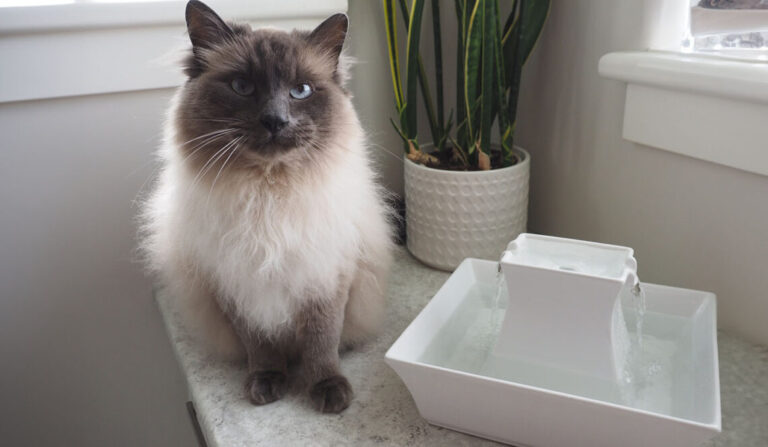
Pros:
- Naturally resistant to bacteria buildup
- Easy to clean and dishwasher-safe
- Stylish—often blends with home décor
Cons:
- Heavier and more breakable
Typically more expensive than plastic
Best For: Cats with chin acne or sensitive skin, and homes that prioritize cleanliness
Plastic Fountains
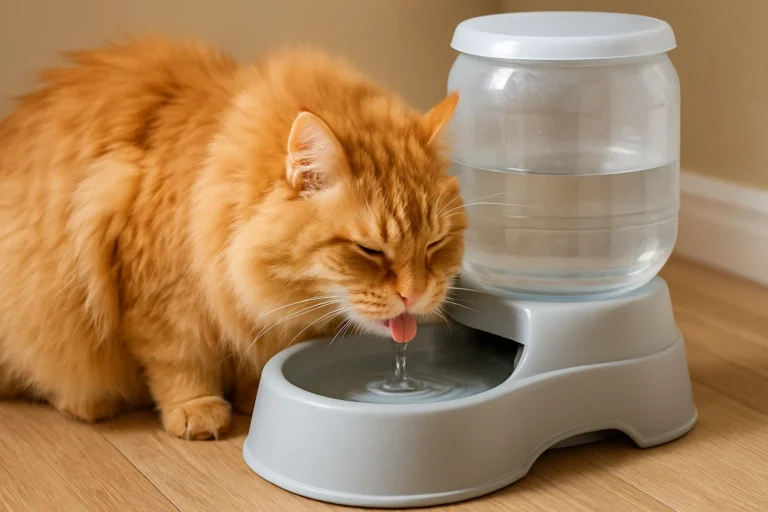
Pros:
- Lightweight and budget-friendly
- Available in a wide variety of styles and sizes
- Often includes fun features like LED lights or bubble modes
Cons:
- Can develop scratches that harbor bacteria
- May retain odors over time if not cleaned frequently.
Best For: Pet owners looking for affordability and lighter designs, as long as they’re committed to regular cleaning
Stainless Steel Fountains (Less Common)
Pros:
- Hypoallergenic and bacteria-resistant
- Durable and long-lasting
Cons:
- Fewer stylish design options
- Can be more expensive or harder to find
Best For: Pets with plastic sensitivities or allergies
Understanding Filters: Carbon, Foam, and Multi-Stage
A cat water fountain is only as good as its filtration system. Clean water not only tastes better—it’s safer, especially for pets prone to urinary or kidney issues.
Here’s what to know about the three most common types:
| Filter Type | Purpose | Pros | Cons | Notes |
|---|---|---|---|---|
| Foam Filters | Traps hair, food debris, and dirt before it reaches the pump | Protects the motor and keeps the fountain running smoothly | Needs weekly cleaning or replacement | Ideal for homes with long-haired pets; first line of defense |
| Carbon Filters | Improves taste and reduces odors | Often combined with foam for better performance | Must be replaced every 2–4 weeks, depending on water quality | Great for picky drinkers who dislike stale or chlorinated water |
| Multi-Stage Filtration | Combines several methods to purify water more thoroughly | Offers superior water clarity and safety | Higher replacement costs but longer-lasting filters (30–90 days) | May include foam, carbon, ion-exchange resins, or ceramic layers |
Noise Levels: Why Quiet Matters
Sound might seem like a small detail when choosing a cat water fountain, but it can make or break your pet’s willingness to use it.
Pets Are Sensitive to Sound
Cats, in particular, have highly sensitive hearing. A fountain that hums, buzzes, or vibrates too loudly might be perceived as a threat—or at the very least, an annoyance.
Dogs with anxiety or sound sensitivities can also be put off by sudden pump noises or water splashing sounds.
What to Look For
- Noise ratings under 30 decibels (dB) are ideal for quiet environments.
- Magnetic drive or wireless pumps tend to operate more silently.
- Adjustable flow settings can help reduce water noise, especially at night.

Pro Tip
Some fountains get louder as the water level drops. If your fountain is suddenly noisy, check the fill line first.
What to Avoid
- Exposed or vibrating pumps
- Thin plastic bases that echo motor noise
- Non-insulated motors (often found in budget models)
For sound-sensitive pets, prioritize fountains labeled as “whisper-quiet” or those with smart eco modes that run intermittently.
Capacity + Convenience
Finding the right cat water fountain isn’t just about features—it’s about how well it fits your daily routine and your pets’ needs.
Size Matters
Smaller fountains (under 70 oz) may work well for single-pet homes or cats with dainty drinking habits.
Larger fountains (90–130 oz or more) are better suited for:
- Multi-pet households (cat + dog combos especially)
- Busy pet parents who don’t want to refill daily
- Pets with higher hydration needs (e.g., kidney support)
Veterinarians often recommend making water “always available” as a low-effort health safeguard.
Power + Setup Options
- Plug-in models: Reliable but require proximity to an outlet
- Wireless pump bases: Easier to clean and safer around water
- Battery-operated fountains: Great for travel or outlets in short supply

Pro Tip
Look for auto shut-off features when water is low—it protects the motor and avoids dry operation.
Cleaning: The Dealbreaker
- Dishwasher-safe parts = time saver
- Removable tanks or open-bowl designs make rinsing easier
- Fewer corners and seams = less grime buildup
Avoid models that require disassembly just to access the pump. If it feels like a chore, it won’t stay part of your routine.
Fountains Worth Exploring (Without the Hype)
If you’re considering a cat water fountain, it helps to know what kinds of options are out there. While we don’t push specific brands, here are a few types worth exploring based on functionality and pet behavior patterns:
Ceramic Fountains with Dual Streams
- Best for: Style-conscious homes and cats with chin acne
- Benefits: Hygienic, heavy enough to stay put, and typically quiet
- Common features: Dual streams, open bowls, dishwasher-safe parts
A ceramic dual-stream model like the PetSafe Drinkwell Pagoda Fountain for pets sensitive to plastic.
9.3
PetSafe Drinkwell® Pagoda Fountain
- 70 oz capacity
- Top-rack dishwasher safe
- Open bowl & multi-level design
- 2 free-falling water streams
- Activated carbon filter
Smart Fountains with App Integration
- Best for: Tech-savvy pet parents who want reminders and data
- Benefits: App alerts for water level, filter changes, and drinking activity
- Features to look for: Wireless pump, eco/night modes, quiet operation
A smart app-connected option like the CATLINK PURE 2 that offers customizable flow modes
9.2
CATLINK PURE 2
- 2.6L capacity
- 99.9% Effective Sterilization
- Anti-insect Design
- Smart App Monitoring
- 1 year full warranty
Ultra-Quiet Fountains with Gentle Bubbles
- Best for: Anxious or sound-sensitive pets
- Benefits: Under 25–30 dB, often cordless or with muffled pump design
- Ideal flow type: Bubbling surface or trickle stream rather than a strong pour
An ultra-quiet pump design such as the PETLIBRO Capsule Fountain—especially good for nervous pets
9.1
PETLIBRO Capsule Fountain
- 2.1 gallon capacity
- 5-layer filtration
- Whisper quiet at 28 dB
- Anti-splash design
- 16-hour outage protection
BPA-Free Plastic Fountains with Transparent Tanks
- Best for: Budget-conscious homes or frequent travelers
- Benefits: Lightweight, easy to move and refill
- Bonus: Visible water level helps ensure it never runs dry
Look for an option like the Healthy Pet Water Station with a stainless-steel bowl if your cat has allergies.
8.8
Healthy Pet Water Station™
- 1 to 2 1/2 gallons capacity
- Top-rack dishwasher safe
- BPA-free plastic
- Gravity-powered
- Stainless steel bowl

Pro Tip
Whatever model you explore, check the replacement filter availability and price. Some pet parents find that cost adds up quickly—especially for multi-pet homes.
What to Avoid in a Cat Water Fountain
Even well-meaning purchases can fall short if key details are overlooked. Here are common pitfalls to avoid when selecting a cat water fountain:
Hard-to-Clean Designs
- Tight crevices, non-removable tanks, and exposed pumps can harbor biofilm and bacteria.
- If it takes more than a few minutes to disassemble and rinse, it’s likely to be neglected.
Hygiene directly impacts your pet’s health—look for fountains built with cleaning in mind.
Noisy Motors or Vibrating Bases
- High decibel ratings or poor insulation often lead to fountain avoidance—especially among cats.
- Over time, vibration can also damage the floor surface or internal components.
Noise-sensitive pets may simply stop drinking if the fountain startles them.
Low Capacity in Multi-Pet Homes
- Small reservoirs (under 60–70 oz) require frequent refills, especially in warm climates or with larger dogs.
- Risk: running dry overnight or while you’re away for the day
Lack of Emergency Access
- Some fountains stop functioning entirely if the power cuts off, leaving no open water source.
- Choose designs with open-bowl access in case of outages.
Poorly Labeled Filters
- If it’s unclear how often to replace filters—or how to find replacements—it’s easy to fall behind on maintenance.
Look for brands that clearly list filter longevity, frequency, and where to reorder.
Final Word: Hydration Is Preventative Care
Choosing the right cat water fountain isn’t about trend or tech—it’s about making hydration easier, more consistent, and more enjoyable for your pet.
Whether your goal is to prevent urinary tract issues, support kidney health, or simply reduce the number of times you clean a water bowl, a quality fountain can quietly support all of that—without disrupting your day.
Professional Insight
As pet care professionals, we’ve seen how hydration directly impacts long-term wellness. Something as simple as encouraging an extra sip of water can help:
- Reduce the risk of urinary blockages in cats
- Ease kidney strain in aging pets
- Prevent constipation, especially on dry diets
- Improve energy and digestion across life stages
Fountains aren’t magic—but they do address a very real behavioral truth: pets are more likely to drink when the water feels fresh, flowing, and accessible.
Final Thought
Every pet is different. What works for one might not click for another—but choosing thoughtfully, based on your pet’s habits and sensitivities, puts you in the best position to succeed.
If you’re unsure where to start, consult your veterinarian—or talk to a fellow pet parent who’s already made the switch.
Because when it comes to water, consistency matters. And small changes? They ripple into big health wins over time.

